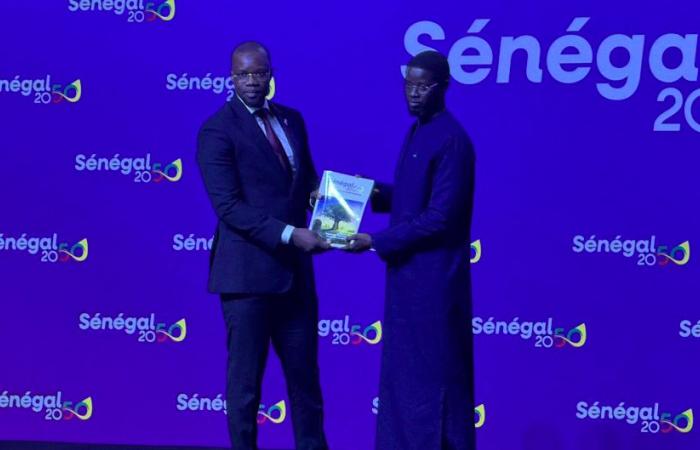“Between unpreparedness and incongruities”: this is the clear observation made by the Senegaal Kese-North America Coalition regarding the National Transformation Agenda 2050. In the in-depth analysis below, the collective points out the numerous flaws in the document presented by the Senegalese government, calling into question the credibility of the famous Pastef “project”.
Finally, the government of Senegal has just made public its vision through “Senegal 2050: National Transformation Agenda” (ANT). In form, the official disclosure of the ANT confirms, to the Senegalese people, that the “project” was a chimera. Basically, the framework made public presents numerous incongruities and inconsistencies.
The “Project” or Driven Plan to Obsess Youth, Voters and Deceive (Project)
For 10 years, like a refrain, the “project”, ready to use, written by more than 4,000 experts, would be the magic potion that would allow Pastef, as soon as it came to power, to make disappear, illico soonall the evils, calamities and prevarications from which Senegal suffers. In particular, endemic youth unemployment, the high cost of living, recurrent floods, the degradation of the education system, the plundering of natural resources, the sell-off of mining resources, etc. We had to wait more than six months, after its installation, for the government to deign to lift a corner of the veil on what it presents as its reference for public policies for the next quarter of a century. It took a long time and it took a decisive helping hand from a strategy and consulting firm to get there. Even if the Prime Minister claims that the head of this cabinet is “came in a patriotic spirit to offer its contribution in this phase of developing the framework”it remains important, in the name of the transparency that our current leaders pride themselves on, that all clarifications be provided on the work accomplished by this firm, particularly whether it was paid by the State or not. And, if so, how was he selected and how much was he paid for his services?
Many Senegalese people were surprised and taken aback to see the head of this strategy and consulting firm present the broad outlines of the “project” instead of the representative or coordinator of the 4,000 executives who would have developed it. Several activists and unconditional supporters of the government were unable to hide their disappointment and disillusionment. Some did not hesitate to express the feeling of betrayal that inhabited them after having attended this unrealistic ceremony, having a pious thought for the many young people who had sacrificed their lives while being convinced of the existence of the “project” and its saving character for Senegal. Victims whose sacrifice proved useless. Ultimately, the “Project” revealed itself, in reality, as a Plan de Radotage for Obnubiler Jyouth, the ANDreaders and Tromperie (PROJECT). A plan which has obsessed over, that is to say which has monopolized the minds, the thoughts and the reasoning of the populations, more specifically those of the young, in such a way as to deprive them of discernment and lucidity as well as to cultivate hatred and detestation of others.
The presentation of the “Senegal 2050” project more than a month after the dissolution of the National Assembly confirms, in retrospectthat behind all the media and political circus, voluntarily orchestrated around the General Policy Declaration (DPG) that the Prime Minister was to make, was nothing more than a simple bluff to shield him from a constitutional obligation, because, in truth, he wasn’t ready!
A few weeks ago, the government presented the situation of the Senegalese economy using provisional figures. This resulted in Senegal’s credit rating being downgraded by the Moody’s rating agency from “Ba3” (stable outlook) to “B1” (under surveillance). This constitutes an attack on the financial reputation of the country with its attendant negative consequences in the immediate future, notably the increase in the cost of borrowing and the decline in the attractiveness of investments. With the presentation of the “Senegal 2050” vision, the government is doing it again with a provisional and incomplete framework. This propensity of the government to make institutional communications on the basis of figures and/or provisional documents demonstrates its lack of professionalism and indicates its degree of unpreparedness to conduct the country’s affairs.
Between unpreparedness and incongruities
Several incongruities and inconsistencies, and not the least, are detected in the presentation of the “Senegal 2050” vision, as there is a lack of coherence between the final objective sought, namely the systemic transformation of the country, and the paths that the plan intends to take. government to make this happen. As an illustration, some of these incongruities and inconsistencies are given below:
- “The Senegal 2050 vision is based on a national pact” (ANT, p. 7): this is a falsehood, because a pact means a formal (written) agreement. When we talk about « pacte national »this presupposes the conclusion of an agreement between all the active forces of the Nation. In the case of “Senegal 2050”, no segment of society was associated with the process of developing the framework. This is the most widespread criticism formulated by some of the social forces, notably civil society and trade union organizations. The leaked repository is the result of the work of a handful of people. A work that aims to be transformative is accompanied by the involvement and participation of all the stakeholders concerned. This is what would facilitate stakeholder support for the policies that will result from the framework as well as their appropriation, then their implementation. Indeed, of the 18,496.83 billion FCFA that the State of Senegal will need to finance its five-year development plan 2025-2029, 14.1% would be expected from the private sector and 23.6% would come from Public-Private Partnerships. (PPP). In absolute values, no less than 5,700 billion CFA francs are expected from the private sector to ensure the financing of the plan. It is, therefore, absurd and illogical not to involve this private sector in the process of developing a framework whose implementation of the policies and programs resulting from it would depend on its contribution. This is why it appeared surprising, even inexplicable, to have noted the absence of the two main leaders of Senegalese employers (CNP and CNES) at the official presentation ceremony of the framework”;
- A framework which includes several missing dimensions: it is surprising to note, in a work which aims to transform the whole of Senegalese society over a period of 25 years, that questions as important as those linked to culture or the management of our memory collective through adequate care of our historical and heritage legacies. Culture and collective memory must accompany any transformative work in a society, because it makes it possible in particular to safeguard its identity and its history, signs which distinguish it from the rest of the world. These significant gaps clearly demonstrate the lack of a global, holistic and systemic approach;
- Omerta on the monetary policy to be followed. The work of systemic transformation of the Senegalese economy, in a way “sovereign and patriotic” could not be done without our country having room for maneuver regarding the use of money as an instrument of economic policies. However, nothing has been said about Senegal’s monetary sovereignty. An unspoken word that hides ambiguities that deserve to be resolved;
- A modest forecast average growth rate of 6.5 to 7%, between 2025 and 2029. With such a growth rate, it would be illusory to think of achieving a systematic transformation of the Senegalese economy at the end of the projected 25 years. Indeed, economic history teaches that all the Nations that have been transformed relied on double-digit growth rates!
It would be illusory to believe in different results while using the same old recipes which have all failed with less talent than before. We are not condemned to mediocrity. Ultimately, this new “provisional” reference system, presented with great fanfare, had the sole objective of showing populations a semblance of a “Project” in order to continue to deceive them. The next legislative elections will be no exception.






